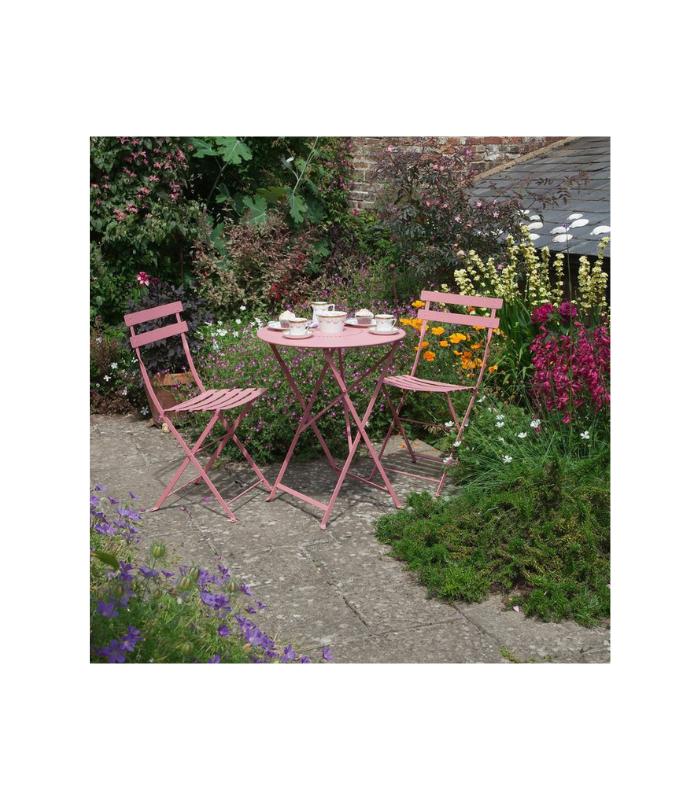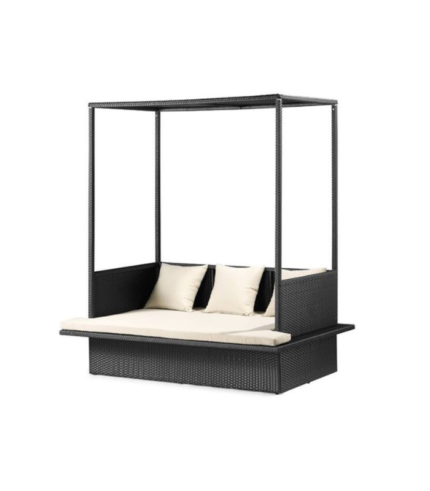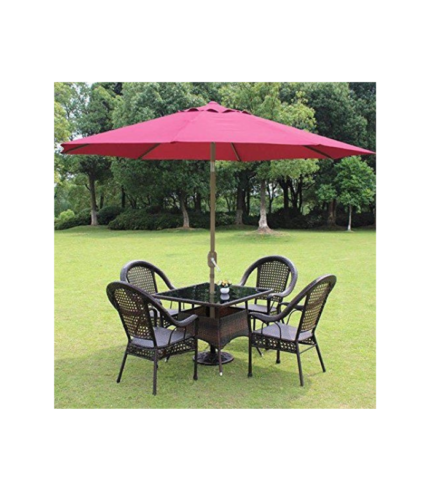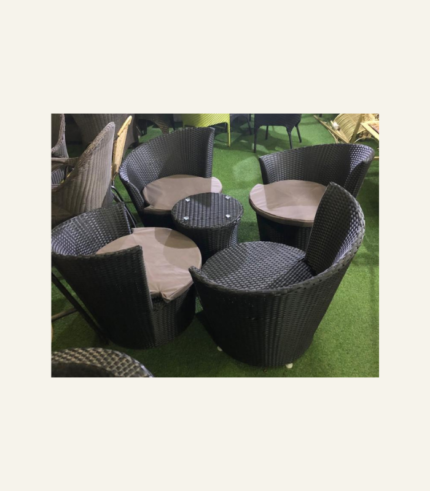FOLDING SET
Folding set represent a versatile and practical solution in furniture design, offering convenience without compromising on style or functionality. This comprehensive article delves into the intricate details of folding sets, covering their evolution, design principles, construction materials, manufacturing processes, usability in various environments, market positioning, customer feedback, case studies, and future prospects within the furniture industry.
Evolution and Design Principles
The concept of folding furniture has evolved significantly over centuries, driven by the need for space efficiency and portability. Early examples date back to ancient civilizations where collapsible stools and tables were crafted from wood or metal for ease of transport and storage.
Modern folding sets build upon these principles with innovative designs that balance convenience with durability and aesthetic appeal. The key design principles include lightweight materials, compact folding mechanisms, and ergonomic considerations to ensure comfort and functionality in diverse settings.
Construction Materials
They utilize a variety of materials chosen for their durability, portability, and aesthetic qualities. Common materials include:
- Wood: Selected for its natural beauty and strength, wood folding sets often feature hardwoods like teak or acacia known for their weather resistance.
- Metal: Aluminium and steel are popular choices due to their lightweight yet robust properties, ideal for outdoor use where durability and rust resistance are essential.
- Plastic: High-density polyethylene (HDPE) or resin-based materials offer affordability, easy maintenance, and resistance to moisture and UV exposure, making them suitable for both indoor and outdoor applications.
Each material selection influences the folding set’s performance, longevity, and overall aesthetic, catering to diverse consumer preferences and environmental conditions.
Manufacturing Processes
The manufacturing of folding set involves advanced technologies and traditional craftsmanship to achieve structural integrity and design precision. Computer-aided design (CAD) software is used for prototyping and refining folding mechanisms, ensuring smooth operation and ergonomic comfort.
Production begins with material selection and preparation, followed by precision cutting and shaping using automated machinery. Assembly lines integrate specialized tools and techniques to assemble components, verify quality control, and apply finishes that enhance durability and aesthetic appeal.
Usability in Various Environments
They excel in usability across a wide range of environments, accommodating diverse lifestyles and spatial constraints:
- Residential Settings: Ideal for small apartments, balconies, or outdoor patios where space optimization is crucial. Folding sets provide flexible seating and dining solutions without compromising on comfort or style.
- Commercial Applications: From cafes and restaurants to event venues and conference centers, folding sets offer versatile seating arrangements that can be easily reconfigured or stored to meet fluctuating demand.
- Outdoor Recreation: Campsites, parks, and beaches benefit from portable folding sets that enhance outdoor leisure experiences with lightweight, weather-resistant designs.
- Emergency and Temporary Settings: In disaster relief efforts or temporary shelters, folding sets provide essential furniture solutions that are quick to deploy and dismantle as needed.
Market Positioning and Competitive Landscape
They occupy a strategic position within the furniture market, appealing to consumers seeking practicality, versatility, and affordability:
- Affordable Solutions: Positioned as cost-effective alternatives to traditional furniture, folding sets cater to budget-conscious individuals and businesses without compromising on quality or design.
- Compact and Portable: Addressing urban living challenges, folding sets offer compact storage solutions that maximize space utilization in small dwellings or shared living environments.
- Versatile Applications: Competing against conventional furniture, folding sets distinguish themselves through ease of assembly, portability, and adaptability to diverse indoor and outdoor settings.
Customer Feedback and Reviews
Customer feedback on folding sets underscores their practicality, durability, and user-friendly features. Positive reviews often highlight ease of assembly, ergonomic comfort, and space-saving benefits that enhance daily living experiences.
Constructive feedback may address design preferences for additional features, material options, or customization opportunities to better align with specific consumer needs and aesthetic preferences.
Manufacturers leverage customer insights to refine product offerings, enhance user satisfaction, and anticipate market trends that drive innovation in folding set designs and functionalities.
Case Studies and Real-World Applications
Real-world case studies illustrate the versatility and impact of folding sets in various contexts:
- Hospitality Industry: Hotels and resorts utilize folding sets to optimize outdoor dining and lounge areas, providing guests with comfortable seating solutions that can be easily adjusted or removed as needed.
- Event Management: Event planners rely on folding sets for temporary seating arrangements at weddings, conferences, and festivals, ensuring efficient space management and guest comfort.
- Education and Healthcare: Schools, universities, and healthcare facilities integrate folding sets into classrooms, waiting areas, and outdoor spaces to accommodate diverse activities and patient needs.
These applications highlight folding sets’ adaptability and practicality across different sectors, contributing to enhanced functionality and user satisfaction in dynamic environments.
Future Prospects and Innovations
Looking ahead, folding sets are poised to evolve with technological advancements and changing consumer preferences:
- Smart Features: Integration of IoT technologies for remote monitoring, adjustable settings, and enhanced user experience in smart homes and outdoor environments.
- Sustainable Materials: Adoption of eco-friendly materials, such as recycled plastics or responsibly sourced wood, to minimize environmental impact and meet consumer demand for sustainable products.
- Customization Options: Expansion of design options and modular configurations that allow consumers to personalize folding sets according to space requirements, aesthetic preferences, and functional needs.
These innovations align with emerging market trends, sustainability initiatives, and evolving lifestyles, ensuring their continued relevance and appeal in a competitive global marketplace.
Conclusion
In conclusion, they represent a versatile and innovative solution in contemporary furniture design, offering practicality, portability, and aesthetic appeal across residential, commercial, and recreational environments. Their evolution from ancient origins to modern applications underscores their enduring value in addressing space constraints, enhancing flexibility, and supporting diverse lifestyles.
With positive customer feedback, strategic market positioning, and ongoing innovation, they continue to redefine furniture solutions by combining functionality with design innovation. As they evolve to meet evolving consumer needs and technological advancements, they reaffirm their role as essential assets in optimizing living spaces, promoting sustainability, and enriching everyday experiences.























Reviews
There are no reviews yet.